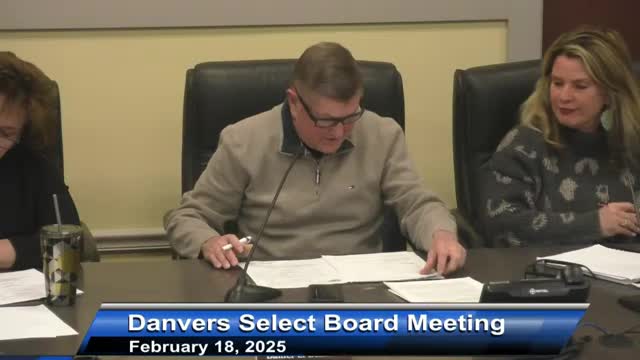Danvers board clarifies snow-removal rules, hydrant responsibilities and asks staff to review ADA guidance
February 19, 2025 | Town of Danvers, Essex County, Massachusetts
This article was created by AI summarizing key points discussed. AI makes mistakes, so for full details and context, please refer to the video of the full meeting. Please report any errors so we can fix them. Report an error »

Select Board members on Feb. 18 clarified that there is no statewide law requiring residents to clear sidewalks after snow; rather, state law allows municipalities to adopt bylaws that can impose such requirements.
The board relayed information from the fire chief and acting DPW director explaining local practice for clearing fire hydrants and sidewalks. The fire department said hydrants are overseen by the water department but that fire crews and DPW will clear inaccessible hydrants by hand or with equipment when necessary. The town uses GIS maps to help residents locate nearby hydrants, the manager said, and residents were urged to “adopt” the hydrant and sidewalk nearest them to ensure accessibility.
“I wondered about what our responsibilities are as a municipality related to accessibility with snow removal,” said Amy Velasquez, an Accessibility Commission member who spoke in the meeting’s public-comment period. The board asked town staff to research recent state and federal ADA guidance and report back.
Town officials also acknowledged resident concerns about liability when individuals clear sidewalks and the potential for private plow contractors to bury hydrants inadvertently. A Town Meeting member asked whether the town would assume liability if a resident cleared snow and someone later was injured; the board said it would take that question for follow-up with legal counsel.
Why this matters
Cleared sidewalks and accessible routes affect emergency access, pedestrian safety and compliance with disability-access requirements. Hydrant access is a public-safety issue for firefighting.
What’s next
Staff will research state statutory authority on snow-removal bylaws and recently released ADA guidance and report to the Select Board at a future meeting. The town manager said the fire department and DPW will continue to coordinate responses after major storms and to use social media and GIS maps to encourage residents and businesses to clear hydrants and sidewalks proactively.
The board relayed information from the fire chief and acting DPW director explaining local practice for clearing fire hydrants and sidewalks. The fire department said hydrants are overseen by the water department but that fire crews and DPW will clear inaccessible hydrants by hand or with equipment when necessary. The town uses GIS maps to help residents locate nearby hydrants, the manager said, and residents were urged to “adopt” the hydrant and sidewalk nearest them to ensure accessibility.
“I wondered about what our responsibilities are as a municipality related to accessibility with snow removal,” said Amy Velasquez, an Accessibility Commission member who spoke in the meeting’s public-comment period. The board asked town staff to research recent state and federal ADA guidance and report back.
Town officials also acknowledged resident concerns about liability when individuals clear sidewalks and the potential for private plow contractors to bury hydrants inadvertently. A Town Meeting member asked whether the town would assume liability if a resident cleared snow and someone later was injured; the board said it would take that question for follow-up with legal counsel.
Why this matters
Cleared sidewalks and accessible routes affect emergency access, pedestrian safety and compliance with disability-access requirements. Hydrant access is a public-safety issue for firefighting.
What’s next
Staff will research state statutory authority on snow-removal bylaws and recently released ADA guidance and report to the Select Board at a future meeting. The town manager said the fire department and DPW will continue to coordinate responses after major storms and to use social media and GIS maps to encourage residents and businesses to clear hydrants and sidewalks proactively.
View full meeting
This article is based on a recent meeting—watch the full video and explore the complete transcript for deeper insights into the discussion.
View full meeting
